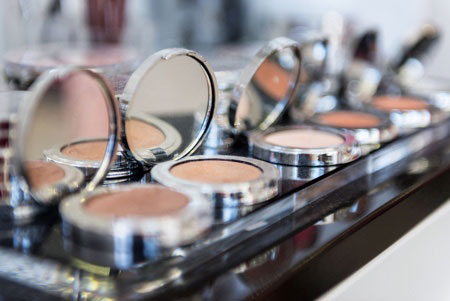New FDA Guidelines in Place to Keep Asbestos Out of Cosmetics

The Modernization of Cosmetics Regulation Act of 2022, known as MoCRA, is the most significant measure taken in nearly 100 years to keep items most people use every day safe. Not since the Federal Food, Drug and Cosmetic Act was passed in 1938 has there been such a sweeping piece of legislation.
According to the U.S. Food and Drug Administration, Americans use six to 12 cosmetics products daily. Ordinary items like shaving cream, makeup, nail polish and skincare products may contain talcum powder. Talc has the potential to be tainted with asbestos since the minerals form close together. Asbestos can cause mesothelioma, ovarian cancer and other diseases.
MoCRA Restrictions and Guidelines
MoCRA, which was enacted in January 2022, sets out a series of restrictions and guidelines to help ensure consumer products are safe. These include:
The Modernization of Cosmetics Regulation Act of 2022 also ensures that the industry complies with regulations established by the FDA for good manufacturing practices, fragrance allergen labeling requirements and standardized testing to detect toxic asbestos in cosmetic products that contain talcum powder.
Exemptions to MoCRA
There are some exemptions to MoCRA that exclude some small businesses from good manufacturing practice guidelines, registration and product listing requirements. However, these exemptions don’t apply to facilities that manufacture the following:
- Any product that is injected.
- Products that come into contact with the mucus membrane of the eye during normal usage.
- Those intended for internal use.
- Products intended to alter one’s appearance for more than 24 hours under normal conditions.
There are also exemptions for products and facilities that are subject to requirements for drugs and devices.
Talc and Asbestos in Makeup
Talcum powder remains an ingredient in several cosmetic products despite having a history of asbestos contamination. Talc dilutes pigmented products and acts as a filler, giving makeup a soft texture. It’s common to find the mineral in powder compacts, finishing powders, eye shadows, blushes, foundations and creams.
As recently as November 2020, a study found 14% of makeup that contained talc also contained asbestos. That’s because when talc is mined it may also contain traces of asbestos since the minerals form in close proximity to one another.
The following cosmetic brands are made free of talc:
- Affordable Mineral Makeup
- Ecco Bella
- Everyday Minerals
- Honest Beauty
- Juice Beauty
- Pacifica
- Shea Moisture
- Smashbox
Talc can also be found in products used by children such as balloons, clay, crayons and children’s makeup.
Talcum Powder Dangers
Risks of using products containing talc derive from the potential for asbestos contamination and the toxic effects of talc dust. Talc dust can irritate the respiratory system and cause coughing, chest pain and shortness of breath. Exposure to talc may also cause ovarian cancer in women and possibly lung cancer in talc miners. Talc contaminated with asbestos can also cause asbestos-related cancers.
Johnson & Johnson has lost several multimillion-dollar lawsuits in recent years due to talc products contaminated with asbestos. In April 2023, the company agreed to pay $8.9 billion to settle thousands of lawsuits from claims that its talc-based products caused cancer.
In October 2021, Johnson & Johnson announced that its talc subsidiary filed for Chapter 11 bankruptcy protection. A ruling by the U.S. Court of Appeals for the Third Circuit later denied the bankruptcy protection, saying J&J and the subsidiary were not in “financial distress.”
According to a Reuters investigative report in 2018, Johnson & Johnson was aware of asbestos contamination tracing back several decades. Lab tests showed asbestos in its talc products from 1971 to the early 2000s. Johnson & Johnson failed to report the findings to the FDA.